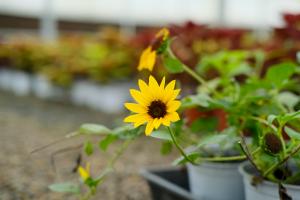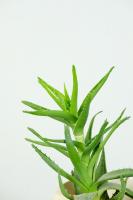Is a Tomato Plant Autotrophic or Heterotrophic?
Plant life is divided into two main categories: autotrophic and heterotrophic. Understanding the difference between these two systems is important when it comes to understanding how plants obtain and use the energy they need to survive. In this article, we will take a closer look at tomato plants to determine if they are autotrophic or heterotrophic.
The Basics of Autotrophy and Heterotrophy
Autotrophic organisms are those that can produce their own food. They do this through a process called photosynthesis, which involves converting light energy into chemical energy that can be stored as glucose. When plants photosynthesize, they take in carbon dioxide from the air and water from the soil. They react these two substances together, using sunlight as the energy source, to produce glucose and oxygen.
Heterotrophic organisms, on the other hand, cannot produce their own food. They must obtain it from other sources, such as plants or other animals. There are three main types of heterotrophs: herbivores, carnivores, and omnivores. Herbivores eat only plants, carnivores eat only other animals, and omnivores eat both plants and animals.
The Tomato Plant's Autotrophic Nature
Now that we understand the basics of autotrophy and heterotrophy, let's turn our attention to tomato plants. Tomato plants are in fact autotrophs, meaning they are capable of producing their own food through photosynthesis.
Tomato plants are classified as angiosperms, which are flowering plants that produce seeds enclosed in a fruit. The tomato fruit is actually a type of berry, and it contains seeds that can be used to grow new tomato plants. Tomatoes are also known as fruiting vegetables, as they are used in many culinary dishes and are often treated as vegetables in cooking.
The Role of Photosynthesis in a Tomato Plant's Growth and Development
Photosynthesis is critical to a tomato plant's growth and development. Through this process, the plant produces the energy it needs to carry out its various functions, such as producing and storing nutrients, growing new leaves and stems, and producing flowers and fruits.
Tomato plants need a few important factors in order to photosynthesize effectively. These include sunlight, carbon dioxide, and water. Sunlight provides the energy the plant needs for photosynthesis, while carbon dioxide and water are the two main reactants in the process.
The Importance of Autotrophy in Ecosystems
As we've seen, tomato plants are autotrophic, meaning they can produce their own food. This is an important part of the ecosystem, as autotrophs form the base of the food chain. Without autotrophs, heterotrophs (such as animals and fungi) would not have a source of food, and the ecosystem would collapse.
Autotrophs also play a critical role in the global carbon cycle. By photosynthesizing, plants remove carbon dioxide from the atmosphere and store it in their tissues as glucose. When the plant dies, the carbon is released back into the atmosphere, but some of it may also be stored in the soil as organic matter. This helps regulate the Earth's atmosphere and prevent runaway global warming.
Conclusion
In conclusion, tomato plants are autotrophic organisms that can produce their own food through photosynthesis. They play an important role in the ecosystem, forming the base of the food chain and regulating the Earth's carbon cycle. Understanding the importance of autotrophy and heterotrophy is critical to understanding how plants obtain and use the energy they need to survive and thrive.

 how many times do yo...
how many times do yo... how many planted tre...
how many planted tre... how many pine trees ...
how many pine trees ... how many pecan trees...
how many pecan trees... how many plants comp...
how many plants comp... how many plants can ...
how many plants can ... how many plants and ...
how many plants and ... how many pepper plan...
how many pepper plan...































